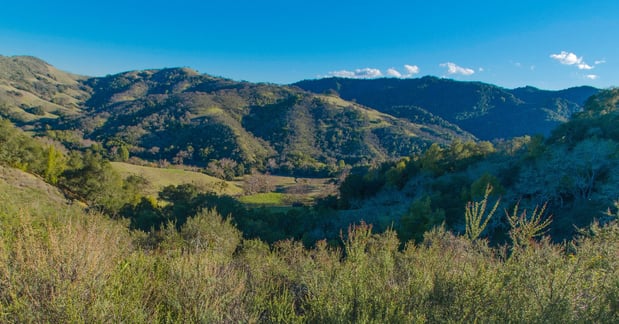This year was historic for climate policy in the United States, namely with President Biden’s Inflation Reduction Act, the country’s strongest climate policy to date. When addressing climate change, policy can either be a major barrier or an exceptional aid, and it looks like we are moving in the right direction.
In addition to dedicating $369 billion to tackle climate change, supporting climate justice, investing in clean energy, a School Electrification Program, funding for affordable housing and transportation, and incentives for the reduction of air pollution, the Inflation Reduction Act will allocate over $19 billion to the United States Department of Agriculture to support climate-smart agriculture.
And at the State level, this last year brought many wins for the climate.

Here's how:
California is reaffirming its commitment to addressing climate change by making strides in funding and policy on a number of fronts. During the 2021-2022 legislative session that ended on August 31, the legislature passed a historic climate resilience package that will provide funding for initiatives related to our work, supporting nature-based climate solutions, climate equity, and the mitigation of climate change.
Over the next five years, the state has committed a total of $54 billion towards climate investments. This includes over $1B towards Nature-Based Solutions and $8B to Climate-Resilient Communities. Throughout the summer, several additional bills – known as trailer bills - were developed - specifying budget allocations, and/or strengthening the fight against climate change.
Some key budget allocations are:
- To the State Coastal Conservancy: $350 million for climate resilience projects and $50 million for acquisitions related to nature-based solutions.
- To the Department of Conservation: $25 million for the Sustainable Agricultural Lands Conservation (SALC) Program and $14 million for the Climate Smart Land Management Program (a new program to support projects that align with the State’s NWL Climate Smart Strategy and 30x30 Strategy).
- To the Department of Fish & Wildlife: $90 million to support nature-based solutions programs and $75 million to protect wildlife and $42 million for wildlife corridors
- To the Wildlife Conservation Board: $222 million to protect fish and wildlife from changing climate conditions, $150 million for nature-based solutions programs, and $2 million to support Regional Conservation Investment Strategies (RCIS).
- To the Department of Forestry and Fire Prevention: $100 million for schoolyard greening projects and $20 million for urban and community forestry
- To the Department of Food and Agriculture: $85 million for the Healthy Soils Program, $22 million for Technical Assistance and Conservation Management Plans, and $5 million for a Technical Assistance Program for Underserved Farms.
- To the Department of Water Resources: $60 million for the Sustainable Groundwater Management Program and $125 million for habitat restoration projects.
- To the Natural Resources Agency: $100 million for the Urban Greening Program, $70 million for a new Tribal Nature-Based Solutions Program, and $35 million for the Recreational Trails & Greenways Program.
- To State Parks: $25 million for the Outdoor Equity Grants Program, $15 million to support the African American History and Engagement in California State Parks, and $9.8 million for Tribal Lands Acknowledgements, Interpretation, and Exhibit improvements.

Last month, legislators introduced a variety of exciting bills that will further support California’s ambitious commitment to the mitigation of climate change. Some major bills signed into law are:
- Assembly bill (AB) 2789, “Design-build projects: local agencies,” co-sponsored by the Open Space Authority and authored by Assemblymember Kevin Mullin, will allow the Open Space Authority, Midpeninsula Regional Open Space District, and East Bay Regional Parks District to continue using design-build, a tool that allows agencies to use the same contractor for the design and construction of a project, which reduces the cost of planning and implementing projects.
- AB 1279,“The Climate Crisis Act,” authored by Assemblymember Al Maratsuchi declares the policy of the state to achieve net-zero greenhouse gas (GHG) emissions as soon as possible, but no later than 2045, to achieve that goal with at least an 85% reduction in GHG emissions, and to achieve and maintain net negative GHG emissions thereafter.
- AB 1757,“California Global Warming Solutions Act of 2006,” authored by Assemblymember Cristina Garcia and based on prior legislation from Assemblymember Robert Rivas, requires the Natural Resources Agency (NRA) to determine on or before January 1, 2024, an ambitious range of targets for natural carbon sequestration and nature-based climate solutions on natural and working lands that reduce greenhouse gas emissions.
- AB 2344,“Wildlife connectivity: transportation projects,” authored by Assemblymembers Ash Kalra and Laura Friedman is a major victory for wildlife across the state. This bill requires the California Department of Transportation, or Caltrans, to work with the Department of Fish and Wildlife to identify barriers to wildlife movement and incorporate wildlife crossings when creating transportation infrastructure projects, with the goal of increasing wildlife connectivity and permeability. Traffic collisions and habitat degradation are some of the largest threats to wildlife species throughout California, and this bill is one step in mitigating those threats.
- AB 2382, “Light pollution control,” authored by Assemblymember Alex Lee, will further reduce harm to wildlife by reducing nighttime light pollution at State facilities. Light pollution can disrupt migratory, breeding, and foraging behavior in wildlife, and minimizing pollution will reduce harmful effects.
- Senate bill 905, “Carbon sequestration: Carbon Capture, Removal, Utilization, and Storage Program,” establishes a framework for capture, utilization, and storage of compressed carbon dioxide (CO2), a greenhouse gas (GHG) and was authored by Senator Anna Caballero.
While there is still plenty of work to be done at Federal, State, and local levels, these accomplishments are major wins for climate action in the United States. The Open Space Authority looks forward to supporting this ongoing momentum and working to protect our precious natural resources for future generations.

